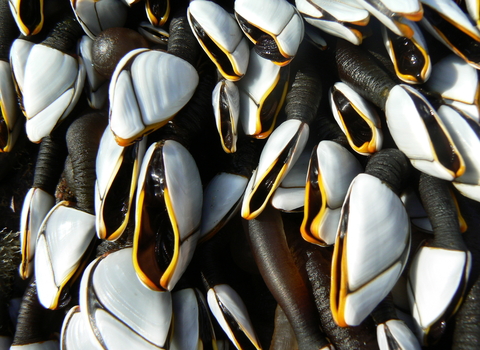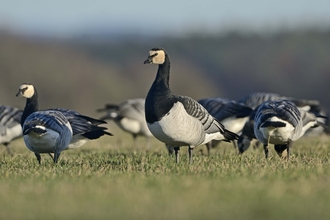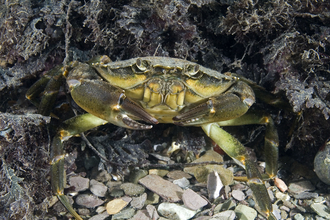
Goose Barnacles ©Martin Raper
Goose barnacle
Goose barnacles often wash up on our shores attached to flotsam after big storms.
Scientific name
Lepas anatiferaWhen to see
January to DecemberSpecies information
Category
Statistics
Length of shell: Up to 5cm Length of stalk: 4-85cmConservation status
Common
Habitats
About
Goose barnacles live attached to rocks, ships, ropes or flotsam floating out at sea. They've even been spotted on a chunk of spaceship that washed up in the Isles of Scilly! They are also known as a gooseneck barnacle and have a long fleshy stem that looks like a black neck. The stem or peduncle is topped with a chalky white shell that houses the main body of the barnacle.Barnacles are a type of crustacean, related to crabs and lobsters. Goose barnacles filter feed on plankton and detritus, capturing it from the water with their specially adapted legs. In many places in the world they are a delicacy - in fact, in days gone by, any ships arriving in Cornwall with goose barnacles on the hull were a real moneyspinner. The goose barnacles would be scraped from the hull and sold for food.





